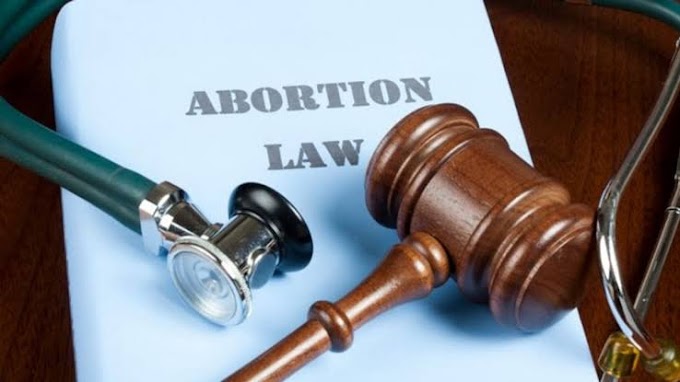Theme- Consumer Rights and Protection
**Authored by Tinku Garg, A Student at Symbiosis Law School, Pune
India is the world's most populous country, with more than 1.5 billion people living. There are nearly 500 million consumers in India. India has the second largest consumer base after China. People purchase daily essentials, luxury and other items from the market. So, we are very familiar with the concept called Consumer Sovereignty, which means that the consumer is the king of the market and controls the market on their terms and is also responsible for the increase or decrease in the producer's output.
Many manufacturing units and service providers, with the primary goal of increasing their positive returns, frequently engage in activities that are detrimental to consumers, such as selling low-quality or defective products or providing unsatisfactory services that fall short of expectations in some way. Furthermore, many industries that seek to become monopolies typically engage in different unfair methods, such as rate lowering, deferred rebate, full line forcing, and other malpractices that expose consumers. Later, there was a need to save customers, and thus the concept of consumer protection came into play to alleviate consumers' misery.
The need to protect and advance consumer interests against unfair and unethical economic practices gave rise to the consumer movement in India, which has been termed "public power”. Big traders or producers are involved in malpractices like adulteration and underweight by manipulating weighing scales. So, to counter this, the Consumer Protection Act was passed on Dec.24, 1986 (Dec.24 is celebrated as National Consumers Day) to establish consumer sovereignty in India and to save consumers from the malpractices done by traders, shopkeepers, vendors, big corporations, etc. Consumer Protection Act 1986 is essential because it guards consumers from damage and ensures they have access to reliable products and services. It also contributes to the establishment of an equitable and fair marketplace.
For the protection of the Consumers, the Consumer Protection Act 1986 (CPA) was passed as discussed above. As time passes, it needs some refinements due to our country's changing socio, political and geo conditions.
Since it was passed in 1986, the CPA has gone through three amendments. The Act's first amendment was in 1991, which brought services within the Act's authority. The second amendment, which expanded the consumer courts' financial jurisdiction, was made in 1993. In 2002, the third amendment was passed to include fresh ideas like product liability and unfair business practices.
The Indian Parliament enacted the Consumer Protection (Amendment) Act on August 6, 2019, and became effective on July 20, 2020. This modification has been the most significant since the Act was passed in 1986. It included several new provisions.
Rights of the Consumer (Under CPA,2019):
Right to be informed: This states that the customer should be informed about the product he/she is purchasing from the market, and the same should be told in a truthful way.
Right to safety: This states that consumer has the right to inquire about the good which he/she is purchasing is safe or not. Right to seek damages/compensation: If consumer got cheated in the market, then the consumer can sue him for compensation in the consumer court, and the consumer got the right to be heard if he/she got cheated.
There are 3 different types of Consumer court in India i.e., District Consumer Dispute Redressal Forum (DCDRF), State Consumer Dispute Redressal Forum (SCDRF), National Consumer Dispute Redressal Forum (NCDRF).
If the consumer is cheated in the market, then he/she can approach the Consumer courts like DCDRF, SCDRF, NCDRF to seek compensation.
First and the foremost thing is that the consumer whosoever is lodging the complaint should be major, sane and solvent. The complainant can lodge the complaint anywhere from the country within two years of getting the goods or services. This could involve product swap or replacement and compensation for physical or mental abuse. The declaration, however, must be credible. Consumers should preserve copies of relevant invoices and receipts and submit them with the complaint letter.
There are an ample number of rights/acts that protect the consumers, and the consumers should be aware of their rights. If they were cheated in the market, they should have enough courage and be literate enough to bring a lawsuit against the same in the consumer court. In India, most consumers need to be aware of their rights. Educated consumers and the Department of Consumers Affair should take the initiative to guide illiterate consumers about their rights.
The protection of the interests of consumers is referred to as consumer protection. These laws and acts take action to protect consumers from unethical business practices and to address their complaints quickly.
REFERENCES
SCC ONLINE, https://www.scconline.com/blog/post/2020/12/24/consumer-protection-act-2019-a-primer/ (last visited Sep.22,2023)
BYJU’S, https://byjus.com/commerce/what-is-the-consumer-protection-
act/#:~:text=The%20Consumer%20Protection%20Act%2C%20implemented,their%20rights%20as%20a%20co nsumer (last visited Sep.22,2023)
INDIA FILLINGS, https://www.indiafilings.com/learn/consumer-protection-laws-in-india/ (last visited Sep.22,2023)




![Freedom of Speech in India [Indian Supreme court and Law of Sedition]](https://blogger.googleusercontent.com/img/a/AVvXsEiGLLUmLKq5Da6xDZplasOZHKRj-jOhWPkoeuy0_Eq757tUpOiHz-xooXwIlAjF0-hmBfi-TtMIv6on_sVgBXVq4wbWwnbsqLOcNX22S8C2aSq-ZuK3vn9wWAx8tXByYOBfwc0hs6b8RJV84YNFG2greouGKjup6g8kN-xVlchW33VHdSSmrhLC1BUEVbGp=w680)





